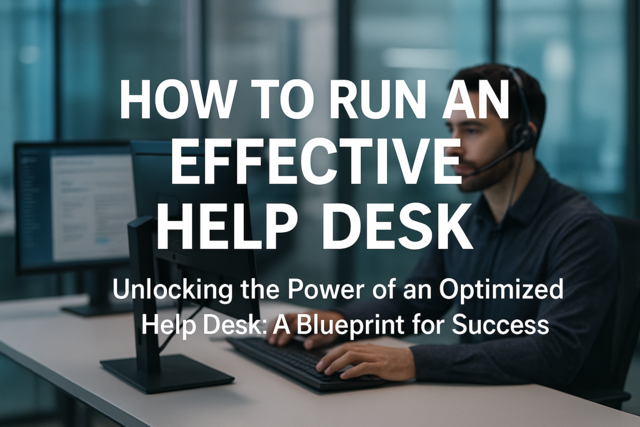There are certain features found in healthy workplaces that greatly contribute to the health of the workforce. But what actually goes into these features and how can they be installed in a workplace to improve it? And who's responsible for ensuring that they remain in the workplace-let alone who's responsible for making sure they're there in the first place?
This article will look at one of the features of a psychologically healthy workforce-work-life balance. Topics will include a more in-depth explanation of what a work-life balance is and what is involved in it, how to establish it at work and at home, and what assistance employers can offer their employees.
What Is Work-Life Balance?
Being able to have this boundary often helps reduce stress found in both areas. This in turn can help improve employee morale, job satisfaction, and attendance. Leaving their work at work means employees are able to use their personal time to relax and take care of themselves and their families. Unfortunately, a healthy work-life balance isn't standard in every business and workplace-about 52% of the workforce lacks a stable work-life balance-so there are too many that are not getting the benefits it offers.2
How To Establish A Healthy Work-Life Balance: At Work
If you are a part of the workforce that does not have a strong work-life balance, then you can take steps to establish one for yourself and your peers. Doing so does not require starting off with nothing-you can have some kind of work-life balance already present at work, but you can still strengthen it if it isn't getting the job done. Establishing or improving your work-life balance requires looking at what you are doing at each side of the balance. Below are somethings that you may need to work on in order to establish the 'work' end of the balance:
Feasible Goals-Professional goals are often encouraged in the business world, and are also intended to help you grow throughout your career. However, you have to make sure that whatever goal(s) you set for yourself are actually feasible, a.k.a. they're possible to accomplish. You don't have to just go with something easy, but you do need to understand that a complicated goal will come with a lot of obstacles that might not make it possible to do in the timeframe that you want to do it in. Your success is not going to happen overnight and it's not going to be an easy fight-know what you're getting into when you set your goals and don't let others dictate them for you.3
Curb Workload-Heavy workloads can overload the work-life balance for many in the workforce. Sometimes this is something that isn't in your control, as some bosses, supervisors, managers, etc. pile on the work without making sure their staff is able to handle it. Doing so is a reckless habit that is unfortunately all too common. However, an employee taking on a heavy workload could also be intentional. They don't realize they can't handle this much, they think it's normal or expected to have that much work at once, or maybe their trying to accomplish something (e.g. overtime pay) by taking on a ton of extra work. Whatever the case, it's something that shouldn't be constant occurrence. If you can, curb your regular workload into something more manageable.
Know Your Limits-This may be a surprise for some, but you can't do it all. You're human and that means you have limitations on what you are capable of. Knowing what those limitations are in regards to your professional life and your work can be to your benefit. Not only does it make it easier to do any of the above tips for your work-life balance, but it can also keep you healthy and less stressed in general. Recklessly pushing your limits can have devastating consequences on both sides of the balance, so know what you're capable of. If you know your limits, you can set better goals and expectations that allow you to actually feel like you're accomplishing something when you do.4
How To Establish A Healthy Work-Life Balance: At Home
Unplug-Technology is literally everywhere in today's world, so trying to get away from it can be very difficult. That doesn't make it a bad thing, but it doesn't help when you are trying unwind at home and work keeps (literally or figuratively) calling you back. Technology allows for constant accessibility if you let it, and sometimes that makes it easy for the boundary to blur. Unplugging when you're at home can be one way to keep work at work.5 If you don't want to shut your phone off, you could at least turn off notifications or set a time when you have to stop checking your work email at home. For example, stop checking your work email, messages, etc. an hour after you get home and only once in the morning before you leave for the day.
Exercise-A good portion of the workforce spends their day indoors and seated, which doesn't do much towards physical health. While sitting isn't as bad as some may say it is, staying immobile for such a long length of time can still have a negative impact on your health.6 After a while, it can physically hurt to move and you feel physically and mentally sluggish. Taking some time to exercise at home can help keep the effects of sitting at bay and allow you to have the energy to accomplish your at-home responsibilities. Exercise also works as a great way to destress and boost your mood. You don't have to go spend an hour or two at the gym after work, but taking a walk around your neighborhood when you get home might be enough of a wind-down.
"Me Time" Block-Letting yourself have some personal time to yourself can help establish the home side of your work-life balance. Me time is when you focus on yourself, where you do things that YOU want to do. This could be things like hobbies, personal passions, socializing with friends, or just time that you spend by yourself.7 Carve out some time just to take care of your mental, emotional, and physical health-even if it's for a short block of time a few times a week, if not daily. Some use this time as a reward for getting through the week's responsibilities, both at home and at work.
Feasible Goals-Just like at work, you do have to be somewhat realistic as to what it is that you want to accomplish in your personal life. You only have so much time and you can only do so much before it spills over into your professional life. Keeping goals that are feasible helps maintain the balance between professional and personal, as well as prevents you from getting stressed out and discouraged should things not happen the way you want them to.
What Employers Can Do To Help
While employees are often responsible for maintaining their work-life balance-after all, a significant portion of that is rather personal-there are some things that employers can do to help. There are too many industries that place too strong of a focus on the work portion, often with the intent to sacrifice the life portion. Some of that is due to the nature of those industries and the professions within them-the medical field, for example, often demands quite a bit from its workforce and can make an even work-life balance difficult. However, there are also some industries, like tech, that place such a strong emphasis on the work side that it's almost fetishized and seen as the only option.8 The later is, unfortunately, rather common. Even worse, many employers and business leaders don't seem to realize that it's also very, very toxic and harmful for their workforce.
Much of what employers can do involves the work side of the balance and implementing ways to support the boundary between personal and professional.
Establish Policies-In order to foster a healthy work-life balance, many businesses will establish policies that encourage or make the division of personal and professional easier. This can include procedure for personal days and overtime, but also information on laws like the Family and Medical Leave Act (FMLA) that can be used to deal with certain personal matters without compromising your work responsibilities.9 A similar option that can be set up within the business is paid time off (PTO), which allows employees to take time off with pay for things like vacation, illness, and other personal events.10 Having such policies in place and making sure that information on them is available can help prevent employees from needlessly sacrificing one side of their work-life balance to deal with things on the other.
Employee Assistance Programs (EAP)-EAPS are voluntary programs that offer certain services that may be of use to employees and are organized/provided by the business itself.11 These programs are designed to help employees with things in their personal life that have the potential to interfere with their work life. Companies that offer in-house daycare services, for example, usually do so as part of an EAP. These programs can also be used for work-related problems (e.g. harassment) that can affect employees or for non-work related problems that happen at work (e.g. emergency situations, trauma, etc.).
COMMUNICATE!-No matter what an employer does to help their employees in any way, there needs to be communication. Neither employers nor employees can tell if there's a problem with the other if they don't say anything about it. Communicating with transparency and honesty allows things to actually be accomplished and problems dealt with.12 Employers can encourage communication with their employees about issues, work-life balance related or otherwise, by communicating clearly themselves.
























